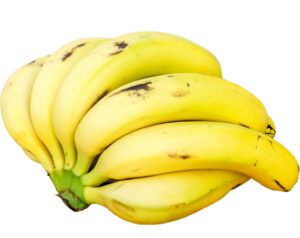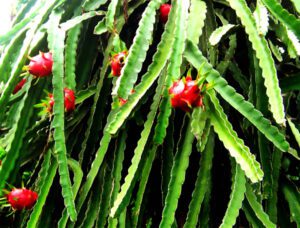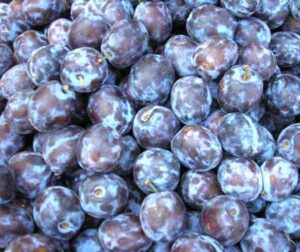Commercial pomegranate farming is not a new business idea. Many people around the world are growing pomegranate from the ancient time. Pomegranate is actually grown for it’s fruit crop, and also used as ornamental trees and shrubs in parks and gardens.
The pomegranate (Punica granatum) is a fruit-bearing deciduous shrub in the family Lythraceae, subfamily Punicoideae. The plants generally grows between 16 and 33 feet tall.
The pomegranate plants have multiple spiny branches and is extremely long-lived (with some specimens in France surviving for 200 years).
Pomegranate leaves are opposite or subopposite, glossy, narrow oblong, entire, 3–7 cm (1+1⁄4–2+3⁄4 in) long and 2 cm (3⁄4 in) broad. The flowers are bright red and 3 cm (1+1⁄4 in) in diameter, with three to seven petals. Some fruitless varieties are grown for the flowers alone.[1]
The pomegranate was originally described throughout the Mediterranean region and was introduced into Spanish America in the late 16th century and into California by Spanish settlers in the year of 1769.
Growing season of pomegranate in the Northern Hemisphere is typically from October to February, and from March to May in the Southern Hemisphere.
Currently, pomegranate is widely available in almost everywhere around the world. The plants are widely cultivated throughout the Middle East and Caucasus region, north and tropical Africa, Mediterranean Basin, the Indian subcontinent, Southeast Asia and Central Asia.
Pomegranates are used for many different purposes. As juice or intact, pomegranates are used in juice blends, cooking, baking, smoothies, meal garnishes and alcoholic beverages (such as cocktails and wine).
Nutritional Value of Pomegranate
Pomegranates are actually among the best and healthiest fruits on Earth. As compared to other fruits, pomegranates contain a wide range of beneficial plant compounds. And studies have shown that this fruit may have numerous benefits for your body, possibly lowering your risk of various diseases.
The edible portion of raw pomegranate is 1% fat, 2% protein, 19% carbohydrates and 78% water. A serving of 100 grams raw pomegranate provides 10% Daily Value (DV) for folate, 12% of DV for vitamin C and 16% DV for vitamin K.
The seeds of pomegranate are also a good food. The seeds are rich source of dietary fiber (around 20% of DV) which is entirely contained in the edible seeds. The arils are also very sweet, with one cup containing 24 grams of sugar and 144 calories.
Health Benefits of Consuming Pomegranate
As you can see, pomegranate is very nutritious. It really shine in it’s wealth of powerful plant compounds, some of which have potential medicinal properties.
Pomegranates are actually among the healthiest fruits and they are safe for all aged people. There are many health benefits of consuming pomegranates. Here we are trying to describe about the top health benefits of pomegranate.
- Pomegranates are very nutritious, and they are loaded with important nutrients. They also contain some sugar.
- There are hundreds of edible seeds (called arils) inside a fruit. These fruits are rich in fiber, vitamins, minerals and bioactive plant compounds.
- Pomegranates contain 2 important plant compounds (punicalagins and punicic acid) with powerful medicinal properties. These 2 compounds have made pomegranate a very healthy fruit.
- This fruit has impressive anti-inflammatory effects. The punicalagins in pomegranate juice have been shown to reduce inflammation (one of the leading drivers of many serious diseases).
- Prostate cancer is a common type of cancer in men, and the pomegranate may help fight prostate cancer and may lower the risk of death.
- Breast cancer is one of the most common types of cancer in women, and pomegranate may also be useful against breast cancer.
- Consuming pomegranate on a regular basis may help to lower blood pressure levels in as little as two weeks.
- Studies in animals and isolated cells indicate that pomegranate extract may be beneficial against several forms of arthritis, but human research is needed.
- Consuming pomegranate on a regular basis is very good for your heart. It can lower the risk of heart diseases. It improves cholesterol profile and protects LDL cholesterol from oxidative damage.
- Regular consumption of pomegranate juice may help treat erectile dysfunction.
- Pomegranates have antibacterial and antiviral properties, and these can be helpful to fight bacterial and fungal infections.
- There are some evidence that this fantastic fruit can improve memory.
- Pomegranate may improve exercise performance by increasing blood flow, as it is a rich source of nitrates.
However, pomegranate is highly nutritious and it is one of the healthiest food. It is packed with nutrients and powerful plant compounds. Consuming pomegranates regularly has wide-ranging benefits and may help reduce your risk of various serious diseases including heart diseases, cancer, arthritis and other inflammatory conditions. And it’s safe to consume pomegranate regularly.
Advantages of Pomegranate Farming Business
Large scale or commercial pomegranate farming is a very easy and profitable business. It’s possible to make good profits from this business. Currently it is a very popular business in many countries around the world.
Starting commercial pomegranate farming is very easy and simple, even the beginners can also start this business. Although, learning from existing farmers will be good. Here we are listing the top advantages/benefits of pomegranate farming business.
- Large scale pomegranate farming is not a new business. It’s an established business in many countries around the world.
- Many people are already doing this business commercially for making profits. So, you don’t have to worry much about staring or operating this business.
- Learning practically before starting this business is very important. And we hope you will be able to find some existing farmers within your area to learn pomegranate farming practically.
- We recommend learning more about pomegranate farming practically from existing farmers. Learning practically from existing farmers will help you to start and run your business perfectly.
- Large scale or commercial pomegranate farming is very profitable and you will be able to make good profits from this business.
- Initial investment requirement in this business is relatively low.
- Both demand and value of pomegranate in the market are very high.
- Pomegranate is already very popular in the market. So, you don’t have to worry much about marketing your products.
- Pomegranate plants generally require less care and other management. And caring the plants is very easy.
- As commercial pomegranate farming is a profitable business, so it can be a great employment source (especially for the educated unemployed people).
- Pomegranate is very nutritious and healthy. You can enjoy it many different ways.
- You can enjoy fresh pomegranate if you start your own pomegranate production business.
How to Start Pomegranate Farming Business?
Starting pomegranate production business is just like starting other crop farming business. It’s very easy and simple because the plants generally grow well in relatively less caring and other management.

As we have mentioned above, you should learn practically from an existing farmer if you are a beginner. Here we are trying to describe more about the steps of starting and operating a pomegranate farming business from planting, caring to harvesting and marketing.
Step 1. Learn Practically
First of all, try to learn practically about this business. You can learn more about this business from your local farms or from your nearest agriculture extension office. Try to visit as many farms as you can in your area to have better knowledge. Complete a pomegranate farming training if possible.
Step 2. Site Selection
Pomegranate plants can be grown on variety of soils. But the plants require deep loamy and alluvial soils for optimum growth and production.
The plants are tolerant to loamy and slightly alkaline soils. They can also be grown on poor soils. Medium and black soils are also suitable for pomegranate cultivation.
Step 3. Land Preparation
Preparing the land perfectly is very important for commercial pomegranate production. Plough the land for 2-3 times and bring soil to fine tilth. After then carry out planking operation to make land leveled and uniform.
Step 4. Consider Climate Requirement
Pomegranate plants generally prefer a dry climate. And a prolonged hot and dry climate is required during fruit development. The optimum temperature congenial for fruit development is 38° C.
The fruits are severely damaged by the pomegranate butterflies in a humid climate and do not develop sweetness. The plants are winter hardy and very drought tolerant. They can grow up to an elevation of 1850 meters.
Step 5. Varieties/Cultivars
Pomegranate has more than 500 cultivars throughout the world, but evidently has considerable synonymy in which the same genotype is named differently across regions of the world.
Several characteristics between pomegranate cultivars vary for identification, consumer preference, preferred use, and marketing, the most important of which are fruit size, exocarp color (ranging from yellow to purple, with pink and red most common), seed-coat color (ranging from white to red), the hardness of seed, maturity, juice content and its acidity, sweetness, and astringency.
However, consult with your local pomegranate producer. You should choose those cultivars which grows well in your area.
Step 6. Purchase Seeds/Plants
You can purchase either seeds or plants. Purchasing seeds and making seedlings of your own is a much cheaper option than buying plants.
Purchase seeds from well known companies or you can also consider ordering the seeds online.
Step 7. Planting
Vegetative propagation is recommended in establishing pomegranate plants. Propagation by cuttings is also common. Other planting methods are layering or gootee.
Take the cuttings from suckers which spring from the base of the main stem and should be mature about 20 to 30 cm long and 6-12 mm thick. Rainy season is the best period to achieve maximum success.
High density planting is adopted in temperate regions. A spacing of 5-6 m. in northern India and also in the plains of Deccan plateau is usually followed. High density planting with a spacing gives 2-2.5 times more yield than that obtained when the normal planting distance of 5 X 5 m. is adopted. Farmers have adopted a spacing of 2.5 X 4.5 m. Closer spacing increases disease and pest incidence.
Step 8. Caring
Pomegranate plants are generally very strong and hardy. They require relatively less caring. But taking additional caring will help the plants to grow well and produce more. Here we are trying to describe the top caring process of pomegranate plants.
Fertilizing
Apply 5-6 kg farmyard manure to one year old plant. Apply Nitrogen (urea) at the rate of 50 grams per plant every year in two equal splits. Try to give the first dose in March and second dose in April. Start applying urea at the rate of 250 grams per plant after 5 years.
Watering/Irrigation
Applying irrigation timely is very important. Apply water at the interval of 10-15 days in summer and in winter increase irrigation interval upto 20-25 days.
Mulching
Mulching is very beneficial for retaining moisture into the soil. It also help to prevent the growth of weeds. You can use organic materials as mulch.
Weeding
Mulching will help to stop most of the weeds. Although additional weeding is required if you notice weeds.
Pruning And Training
Training and pruning help in growth of fresh and healthy shoots. It removes old also disease branches and avoids overcrowding of branches. It also maintains proper shape of the plant.
Step 9. Control Pests, Diseases, Disorders
Like many other commercial crops, the pomegranate plants are susceptible to some pests, diseases and other problems. Here we are trying to describe more about these.
Diseases And Their Control
The main diseases of the pomegranate plants reported are fruit rot and leaf spot. Application of Mancozeb (2g./l.) during rainy season in case of the former and application of Kavach (2g./l) and Carbendazim/Thiophanate methyl/Baycor/Benomyl (1g./l.) during September/October in case of the latter has been found to be effective in most cases.
Pests And Their Control
Common insect pets of the pomegranate plants are mealy bugs, aphids, fruit borer, fruit sucking moths and white fly. Spraying with dimethoate , deltamethrin or malathion etc. depending upon the type of pest infestation has been found to be effective in most cases.
Disorders
Fruit cracking is a serious disorder. This physiological disorder observed in young fruits is due to boron deficiency and that in fully grown fruits is mainly due to moisture imbalances. Tolerant varieties may be cultivated and in other cases spraying with calcium hydroxide soon after fruit set has been found to be beneficial.[2]
Step 10. Harvesting
Fruits gets mature within 5-6 months after flowering. Start harvesting when the fruit’s color changes from green to light yellow or red. Changing of color from green to yellow or red is the indicator of fruit ripening, and it is the optimum time for harvesting. Avoid delay in harvesting as it will lead to fruit cracking and thus leads to yield loss.
Step 11. Post-Harvesting
The fruits can be stored in shades for about one week after harvesting. It will help in hardening of fruit skin. So that less damage is observed in transportation. Grading is essential before marketing. And the fruits are generally graded according to weight.
Step 12. Yield
Exact amount depends on many different factors. A grown up and well kept pomegranate tree should give about 100 to 150 fruits per year.
Step 13. Marketing
Marketing pomegranate is very easy and simple. The majority of the producers sell their products either through trade agents at the village level or commission agents at the market. You can also target selling in your local or any nearest market.
These are the common steps and ways for starting and operating a successful pomegranate farming business. Hope this guide has helped you! Good luck & may God bless you!





